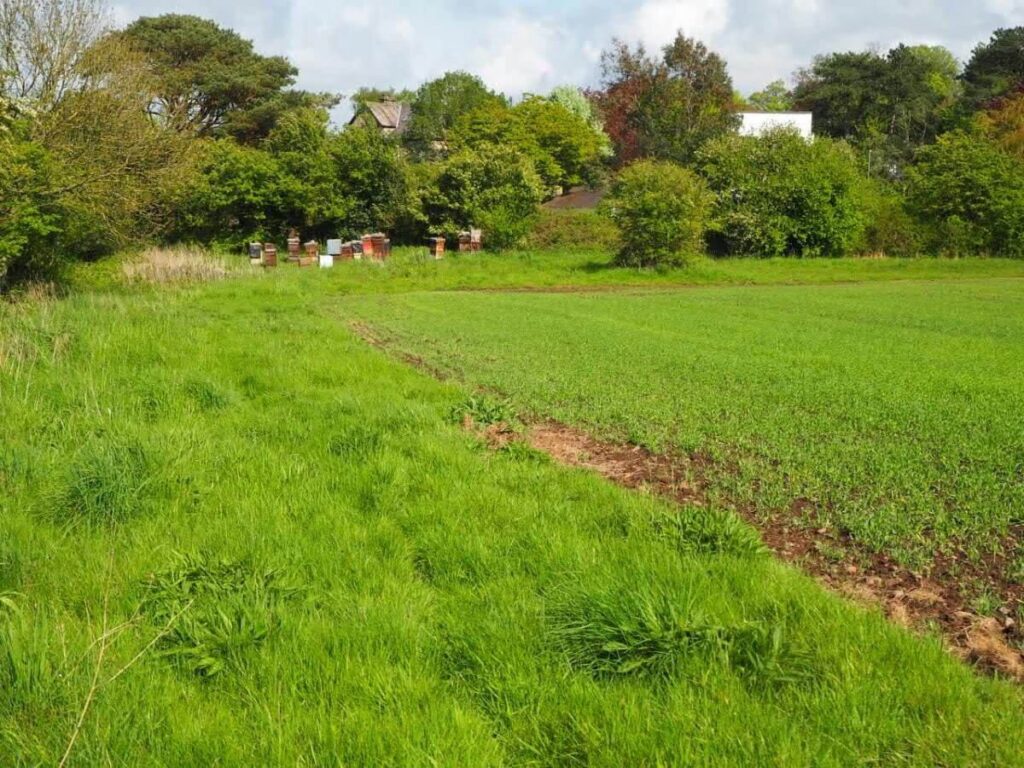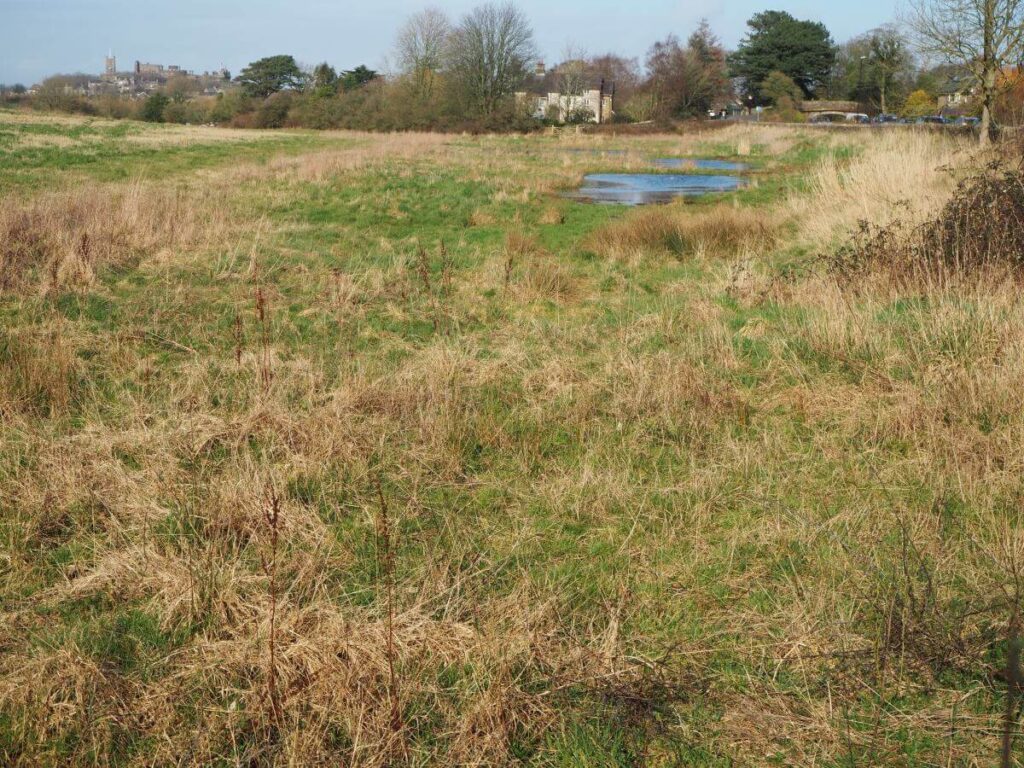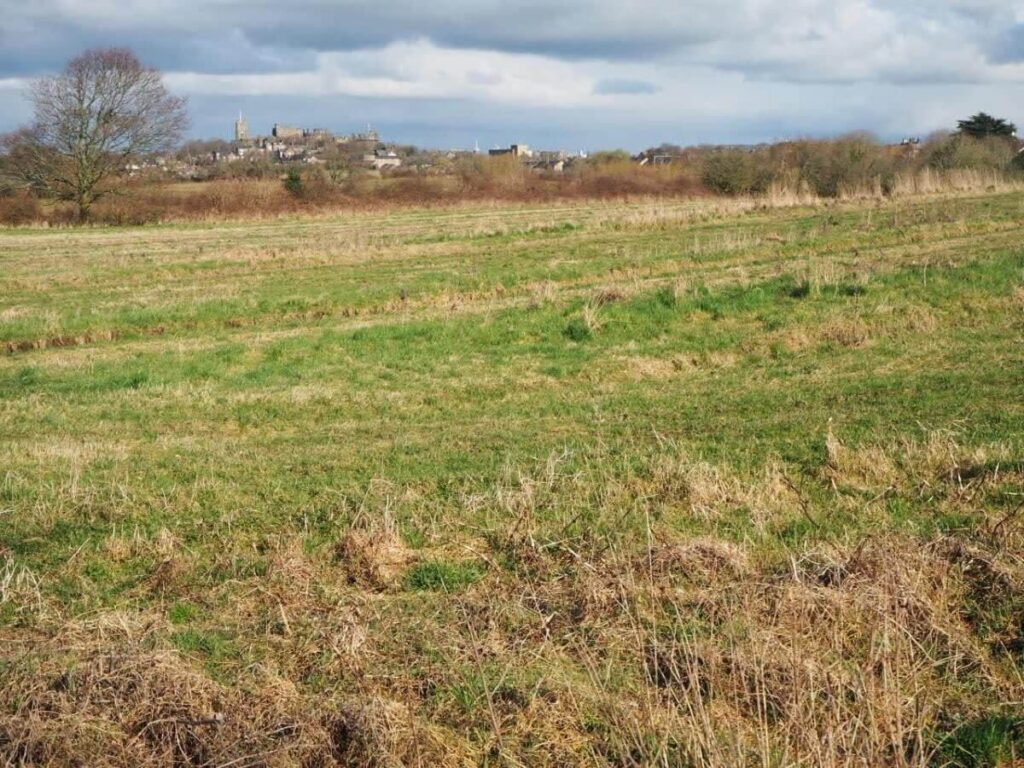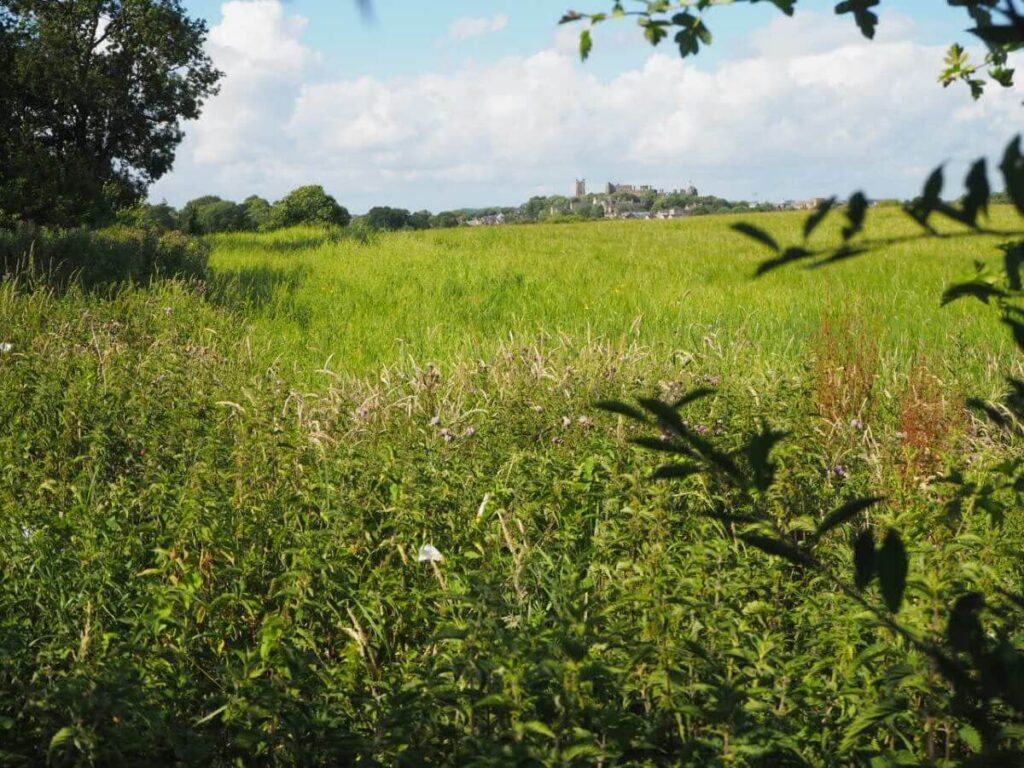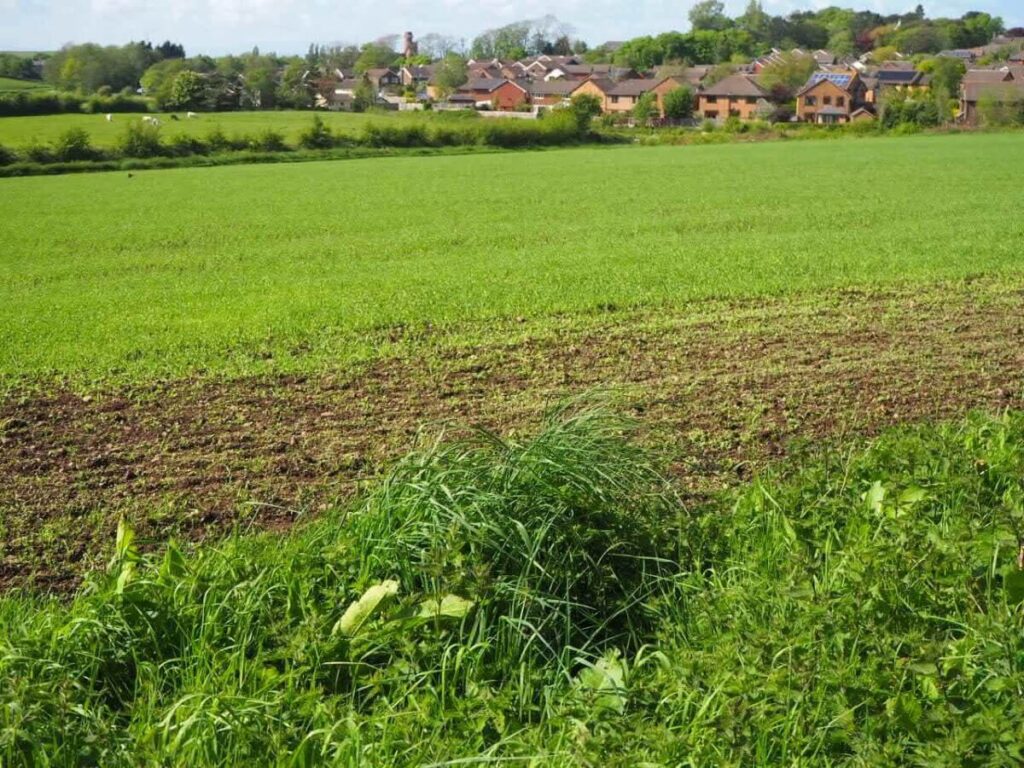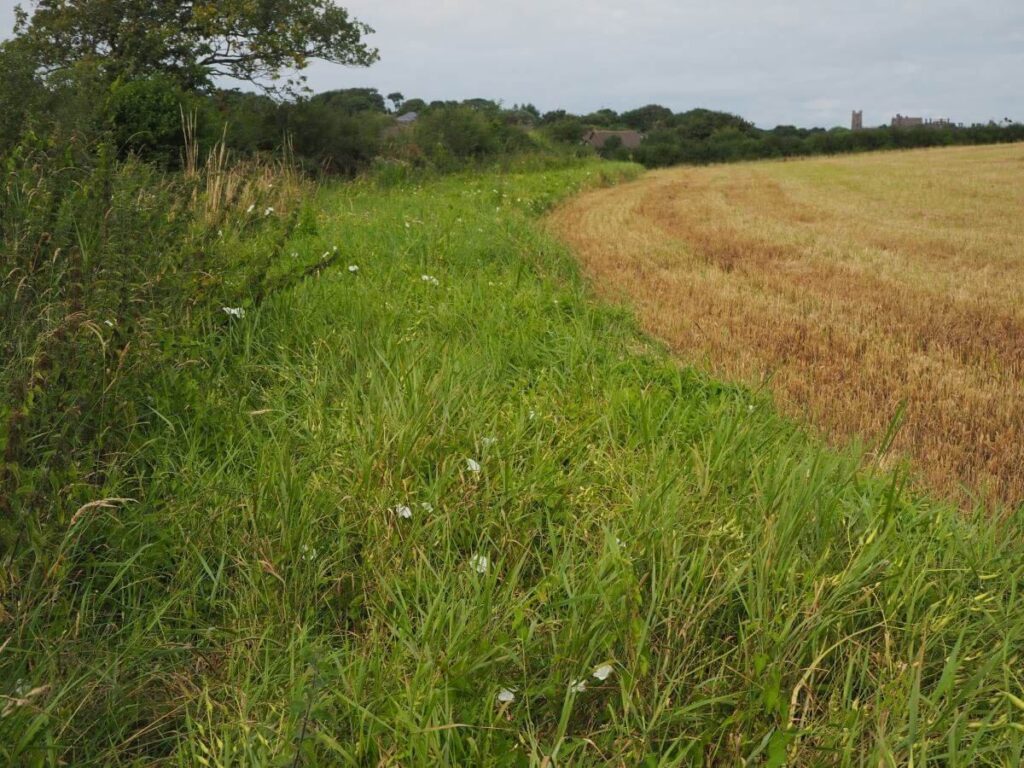Flora Field
Flora Field is a 6 ha (approx. 15 acres) field alongside the Long Pads and Pony Wood path.
History
- Metal detecting has revealed artifacts from Roman times to the present day, including coins, buckles from horse harnesses and musket balls.
- In the Middle Ages land in this area was cultivated as a “strip” or “open field system”.
- The Ordnance Survey map as recently as 1913 shows the area covered by Flora Field divided into 6 smaller fields.
- Read more about the history of Flora Field.
Since 2014
- The Fairfield Association has contracted a local farmer to manage the field on a no-cost basis. He keeps the crop in exchange for the agricultural work.
- Traditional farming methods are used, with one crop per year sown in the spring. Manure is spread before ploughing and an approved herbicide may be applied.
Current Features
- The main part of the field is sown with an arable crop, for example barley.
- Plants such as fodder radish and mustard which provide seeds for birds in winter are sown along the Long Pads and around Pony Wood.
- The other margins are sown with wildflowers for pollinating insects such as bees.
- In the north–east corner of the field there are beehives.
- Uncultivated strips in the middle of the field are a refuge for wildlife and are remnants of the strip farming (lynchets).
- There are 4 ponds at the bottom of the field, two of which were created by Lancashire Wildlife Trust as part of their great crested newt project.
- In the winter there is a bird feeding station installed by Lancaster and District Bird Watching Society to provide seed for over-wintering birds.
Maintenance
- In the spring the crop area is ploughed and drilled by a local farmer.
- The bird food margins are ploughed and harrowed for volunteers to scatter seeds by hand.
- In late summer the crop is harvested and the wildflower margins cut.
- In the autumn the Lancaster and District Bird Watching Society sets up the bird feeding tables.
- Throughout the winter volunteers replenish the tables and scatter seed around them daily.
- Invasive species such as nettles and thistles are scythed when necessary.
- The ponds are monitored regularly to check that there is clear water.
Future
- The field will no longer be used for an arable crop but could be managed to support wildlife.
- We hope to extend the woodland and plant hedges and plant the main crop area with wildflowers and other plants which provide forage for over-wintering birds.
Look out for
Birds such as reed bunting, brambling and linnets, listed on the notice board in winter. A kestrel hovering above the field. Hare and roe deer.
Photographic Survey
The Fairfield Association have maintained a photographic survey of the reserve since 2015. Photographs have been taken on roughly 5 occasions each year: March, mid-May, late June, early August and late September.
Each album is arranged in date order. To find out the specific date particular photos were taken, first select the photo and then select the ‘i’ icon in the top-right of screen. (All albums launch in a new window.)
